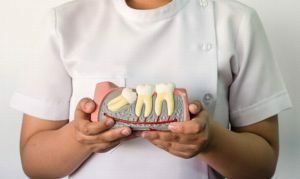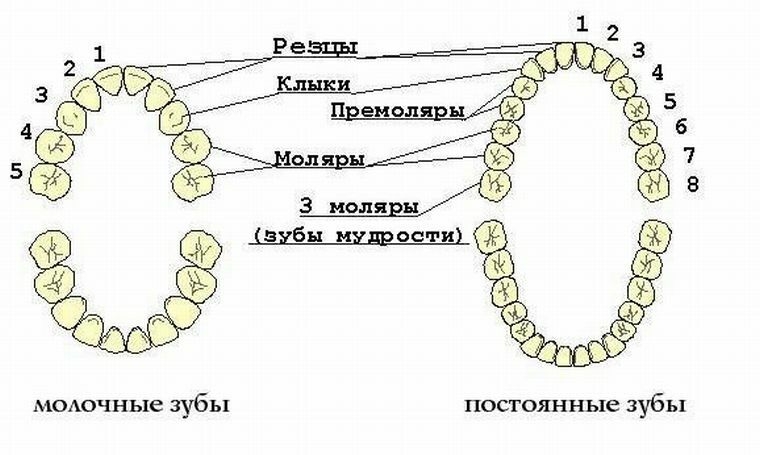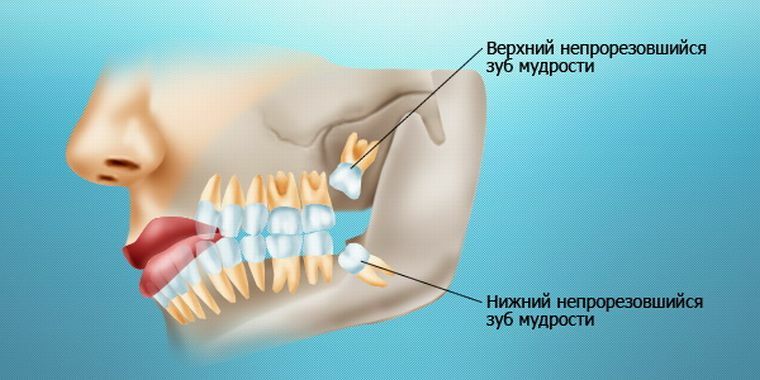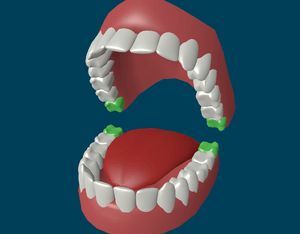 The basis of the human skeleton is the bone marrow. Almost all bones are protected by soft tissues. It is "almost", since the exception are the teeth. They are not covered with either muscle, mucous membrane, or skin.
The basis of the human skeleton is the bone marrow. Almost all bones are protected by soft tissues. It is "almost", since the exception are the teeth. They are not covered with either muscle, mucous membrane, or skin.
Fortunately for a person, teeth in the process of life change once. But it does not become less important to properly care for the oral cavity. Including from the observance of hygiene norms will depend on the number of teeth already in adulthood, their internal preservation and appearance.
There are different opinions on how many teeth a healthy person should have, who carefully monitors his health and, in particular, oral hygiene.
Everyone knows: "32 teeth is the norm!" And what about the so-called wisdom teeth? Are they included in this number? Or is it a nice addition to this kit?
How many teeth should be in a healthy mouth, depends not only on age, but also on individual physiological characteristics.
By the age of 12-14 the milk teeth change is over, and there are 14 molars on the jaws. Agree, to the standard rate is far.
Two more teeth from above and from below should grow to approximately 25-30 years. Of course, they can begin to erupt earlier, although not less than the cases when wisdom teeth do not develop at all. Here everything depends on the body itself.
Each tooth has its own place of a nickname and the amount of
. Several kinds of teeth stand out:
- incisors are rather sharp, therefore they participate in the immediate biting off of food( there are 8 of them in the oral cavity).
- Fangs - are located on the side of the incisors. It is necessary, first of all, to tear food. They are much more developed than in animals, which is due to the preliminary thermal processing of food( 4 pieces).
- Small molars, or premolars - two small bulges are visible on the surface, helping to thoroughly grind( chew food).In addition, they allow tearing pieces of food. As a rule, they are kept at the expense of only one or two roots.
- Large molars( molars) - their appearance directly depends on the location. So, in addition to a few bumps for chewing, molars have grooves - fissures. Large and small molars in the human mouth there are up to 20 pieces.

Why are not they always 32?
It turns out, in the ideal case, there should be 32 teeth, but four of them are "wisdom teeth".Today, people eat so soft food that the need for them is steadily reduced to a minimum.
That's why the G8 more often does not cut through, and remains in an undeveloped state. By the age of 12 only the rudiments of these molars develop. And this is at a time when the remaining teeth are almost replaced.
Eight gaps are problematic, long, sometimes painful: it's almost impossible to miss this process. Gums can swell and hurt greatly, possibly a prolonged temperature increase.
Usually wisdom teeth are cut in pairs, although it happens that only one or three teeth develop.

Wisdom teeth are often cut incorrectly. In this case, they are only visible partially, and the main part is hidden by the gum or bone.
Retinished molars bring discomfort and pain: they can scratch the gums, mouth cavity, causing a lot of problems. Then they need to be deleted.
Third molars, before the G-8, have up to 5 roots, which can be tightly woven into a single, denser, more durable. But the wisdom teeth have up to 8 roots at once. This is explained by the location close to the pulp. Channels of such teeth can bifurcate, and sometimes several channels are found in one root. For this reason, when removing wisdom teeth, be sure to take a picture.
Only in this way the doctor will be able to determine the number of roots and channels of the molar.
Age features of
Teeth change over a lifetime. If children have weakly fixed milk teeth to change to indigenous ones, then adults have completely different processes.
With age, teeth wear out, and the degree of erasure experienced dentist can easily determine the age of the patient without problems. Also, depreciation depends on the texture of the food taken, physiological characteristics.
Up to 16 years of age, there are no traces of erasure. But by the age of 20, a slight flattening appears on the teeth, which is quite natural for  of this age.
of this age.
Over the next ten years, the tubercles and sharp cutting edges are overgrown with a dentin coating - bone substance. At the age of 45, one can already see the serious erasure of the crown protrusions, and the dentin appears on significant sites.
At 60 years of age, both tooth enamel and crown are completely worn out. After 70 years, only the neck and roots remain. Although by this time most of the teeth fall out or break away due to caries damage.
In summary, a healthy person should have at least 28 teeth, this is already considered the norm. Depending on the number of nuances, by the age of 30 fourth molars can also erupt, thus their number reaches 32.
